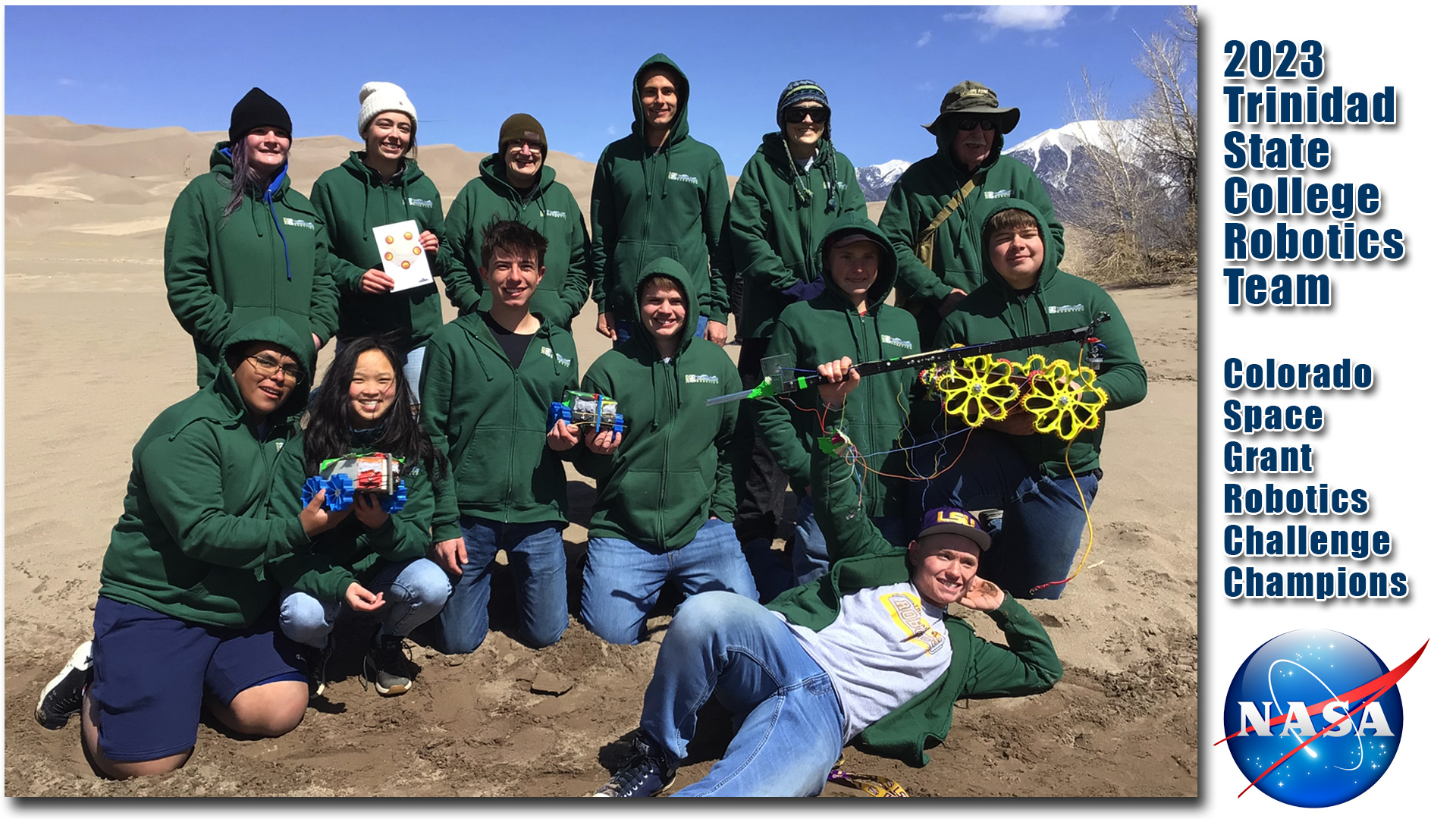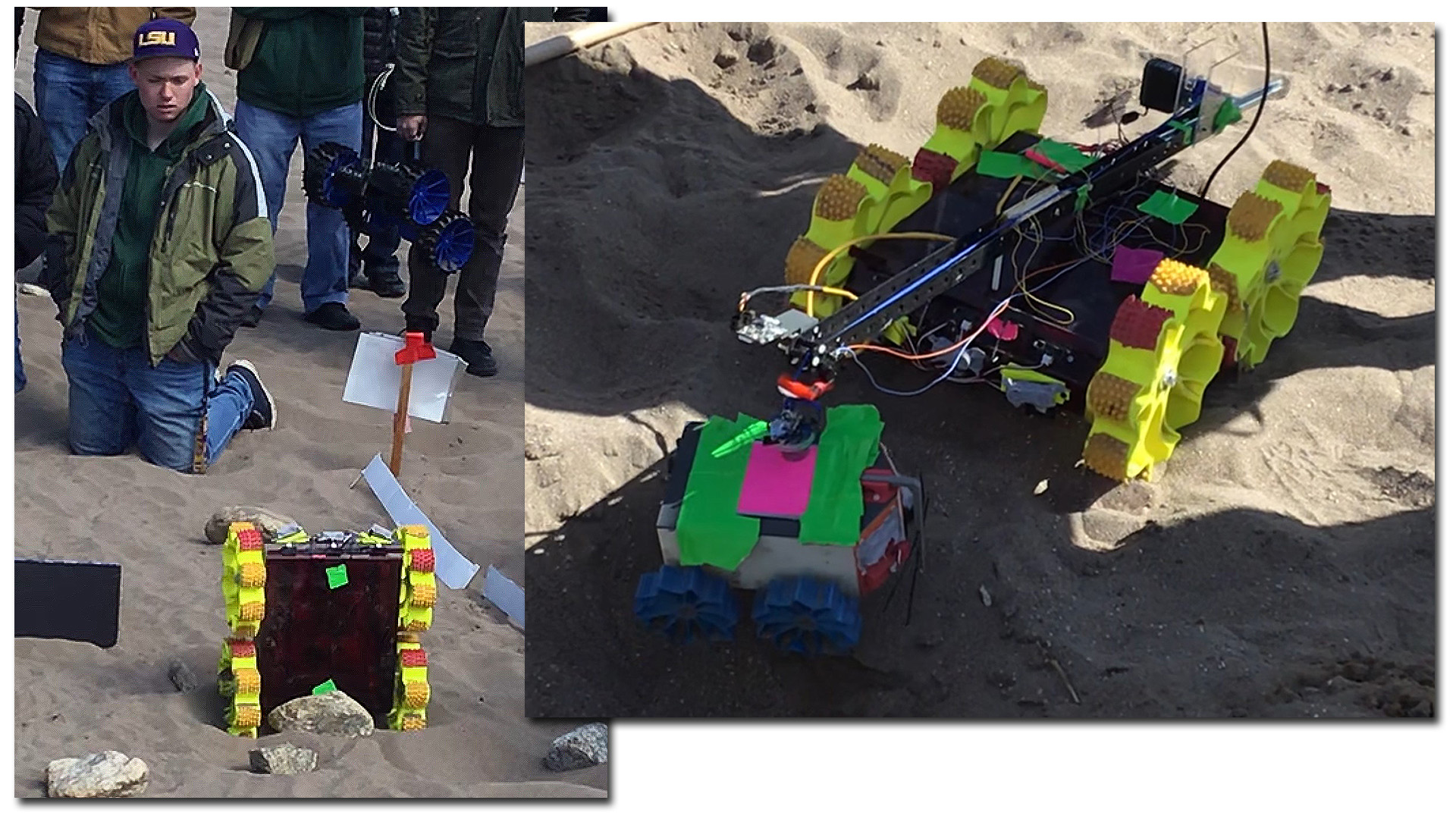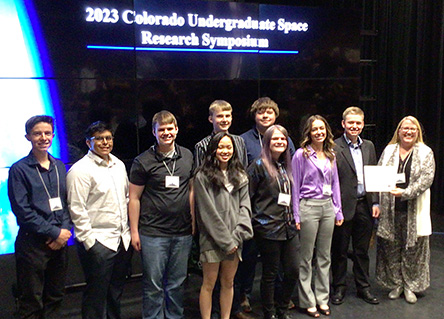Community college team, the only of its kind, takes ‘best performing’ bots at 2023
challenge
By Benjamin Mandile - Reporter - Courtesey of The Chronicle-News
Visit the TSC Robotics page and the event gallery!
 With freezing temperatures and sand everywhere, the robot worked its way through an
obstacle course; then it did it four more times, on its own.
With freezing temperatures and sand everywhere, the robot worked its way through an
obstacle course; then it did it four more times, on its own.
The 2023 Colorado Space Grant Consortium Robotics Challenge, held annually at Great Sand Dunes National Park in Alamosa, challenges teams to develop autonomous robots and test them in a friendly challenge.
Trinidad State College Robotics developed two robots for the 2023 challenge, completing all five courses at the event, in two divisions.
“The challenge was inspired by testing of the Viking Mars Lander missions of the 1970s,” Greg Boyce, a Trinidad State College spokesman said in a statement. “Hardware from those missions was tested at the Dunes, because the sand there was believed to be the closest thing on earth to what rovers on Mars would face.”
Field Retriever Obstinate Grandpa (F.R.O.G.), a rover with a mechanical-electro magnetized arm, and its counterpart, Frequently Lost Youngster (F.L.Y.), were the only two robots in the competition of 20 colleges and universities to complete all five courses and were judged to be the “best performing” robots of the day.
Developed by TSC Robotics, F.R.O.G. and F.L.Y. are the culmination of a semester of work for the nine-member team consisting mainly of Las Animas County high school students.
Of the nine members, seven attend GOAL Academy, Hoehne High School or are homeschooled.
But the age of the team gives little insight into what it is able to accomplish. “(The advisors’) always been very accepting of high school students,” said Landon Knight, the team captain of TSC Robotics. “To be on the team, you have to take her programming class, and so that’s how she kind of, I guess you could say – weed out – people that aren’t necessarily as responsible.
So that’s definitely one way that she gets good high schoolers. But I don’t know. It’s pretty cool because we did everything. I think this is the best year that we ever had before, and there were schools out there like (Colorado School of) Mines and CSU-Pueblo and Colorado State University was out there, and we beat everyone.”
 The nine member team built three robots for the challenge: the large rover, and two
copies of F.L.Y., the smaller rover meant to show F.R.O.G.’s ability to retrieve the
lost youngster from the depths of the confined sand-filled course.
The nine member team built three robots for the challenge: the large rover, and two
copies of F.L.Y., the smaller rover meant to show F.R.O.G.’s ability to retrieve the
lost youngster from the depths of the confined sand-filled course.
The bots were redeveloped based on previous years in an effort to remedy past issues, such as wheel-issues. The larger of the two bots was based on the team’s 2016 bot S.A.B.L.E., also known as “Scoop and Bucket Land Explorer.”
“We essentially just built upon the bad things that we had, just the problems we had with last years’,” Knight said. “So, more clearance, things like that.”
Members of the team, which would use 3D-design, 3D-printing, laser cutting, programming, electrical engineering and other fields of science and mathematics to develop the robots, started the project in December 2022 — including design of the external and internal components and finding measurements.
“It was a pretty fun experience,” said Caleb Moorefield, a junior at Goal Academy who helped develop F.R.O.G. “There were definitely some better points, and worse points. But overall, I enjoyed all of it and learned a lot.” Moorefield, who has an interest in plumbing, said being on the team has taught him skills that he can take elsewhere, such as teamwork, programming and how to read design documents.
“The reason I participated was mostly to figure out what it was all about,” Moorefield said. “Coming here I didn’t know how to program. I had had some, very little experience or exposure to programming — so I knew a little bit, but hardly any.”
A big benefit for the team is learning to work together and exposure to industry leaders. Students have gone on to work for NASA, SpaceX, Sandia Labs and Lockheed Martin.
Karen Howl, a mechanical advisor for TSC Robotics since 2009, said that through the
program she has seen shy students come out of their
shells and become leaders, and that for some, it’s the first experience they have
working as part of a team.
The team is also advised by Earl Nesbit (electrical), Hayden Alworth (programming) and Cindy Clements (main advisor).
Clements said some of the biggest lessons of the team come down to teamwork and time management. The team has also expanded the size of the bots, growing them over the years, which presented its own learning curve.
 “There’s no other program like (it) in Trinidad, and that’s for sure,” Clements said.
“I mean especially for hands-on engineering projects. It also gives them hands-on
experience so they’re more attractive to universities and scholarship programs.”
“There’s no other program like (it) in Trinidad, and that’s for sure,” Clements said.
“I mean especially for hands-on engineering projects. It also gives them hands-on
experience so they’re more attractive to universities and scholarship programs.”
The team also attended the COSGC’s Symposium this year, where they presented on their research conducted this semester. The team saw its first research paper accepted in 2011, and since then it has won the People’s Choice Award nine times and won the session award for the paper, presentation five times, and in 2023, Trini9dad State Robotics won the coveted GRAND PRIZE award!
